Guidelines for patients following manipulation under anaesthetic
Introduction
This technique is used in the treatment of frozen shoulders. A shoulder becomes frozen when the soft tissues around the joint become tight and short. This prevents the shoulder from moving and leads to the pain and stiffness with which you are familiar.
General Guidelines
- Pain: A nerve block is used during the procedure, which means that immediately after the operation the shoulder and arm may feel numb. This may last a few hours. The shoulder will be sore when this wears off and this may last for the first few weeks. It is important that you continue to take the painkillers prescribed in hospital. Ice packs may also help reduce pain. Wrap frozen peas/crushed ice in a damp, cold towel and place on the shoulder for up to 15 minutes.
- Movement: It is of the utmost importance that you begin moving and exercising the arm on the day of the procedure. Adequate pain relief will enable you to perform the exercises demonstrated by the physiotherapist. Try to use the arm for normal daytime activities where possible
- Driving: You may drive after one week.
- Returning to work: If you have a desk job you will probably be able to return after one week. You may need slightly longer if your job involves lifting or manual work.
- Leisure activities: These will depend on the range of movement and strength in your shoulder. It is possible to do most things as long as your shoulder feels comfortable. Please discuss specific activities with your physiotherapist.
- Follow up appointments: You will have a follow up appointment at The Shoulder Unit about three weeks following your procedure. You will be reviewed by the surgeon/specialist physiotherapist who will check your progress.
- Progress: This is variable. In the first few weeks your shoulder will be sore although your movements will have improved. Do not be surprised if the soreness affects your daily activities. You should continue to move and use your arm normally. Over the weeks following your surgery you will notice a gradual improvement in movement and pain.
- Exercises: It is essential that you carry out the exercises regularly following your procedure, ideally four to five times per day increasing as able. It is quite normal for you to experience aching, discomfort and stretching when doing the exercises but decrease the exercises if you experience intense or lasting pain.
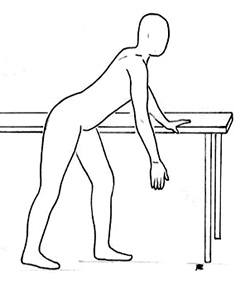
- Stand. Lean forwards. Let your arm hang down. Swing your arm forwards and backwards. Repeat 10 times. (Shown for the right shoulder).
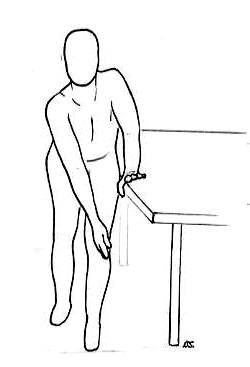
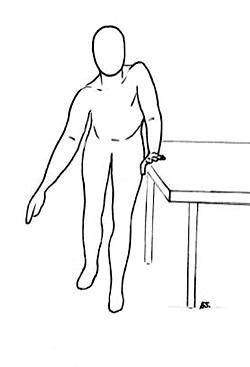
- 2)Stand. Lean forwards.
Let your arm hang down.
Circle your arm clockwise & anti-clockwise.
Repeat 10 times.
(Shown for right shoulder). 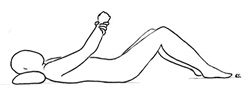

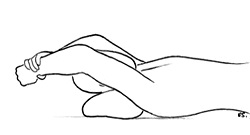
- Lying on your back.
Support your operated arm with the other arm and lift it up overhead.
Repeat 10 times.(Shown for right shoulder) 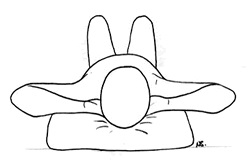
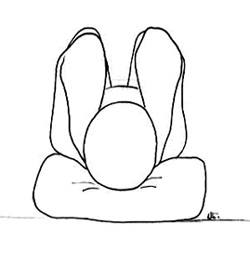
- Lying or sitting. Put your hands behind your head, and gently stretch the elbows towards the floor/ backwards to feel a gentle stretch on the front of your shoulders. Repeat 5 times.
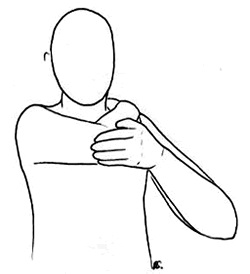
- Take your affected arm across your body to rest the hand on the opposite shoulder. Grasp the elbow with your good hand and gently stretch the arm across your body. Repeat 5 times.
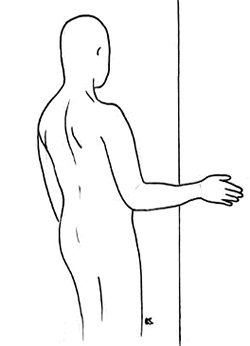
- Standing with elbow flexed to 90 degrees. Hold the elbow close to your body, gently push the hand against a door frame, hold for 5 seconds. Repeat 10 times
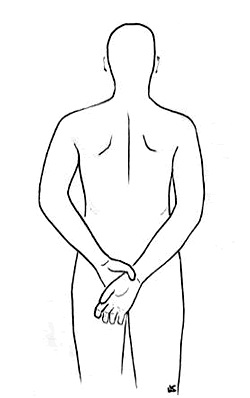
- Standing with your arms behind your back. Grasp the wrist of your operated arm and gently stretch the hand on your affected arm towards the opposite buttock. Then slide your hands up your back. Repeat 5 times
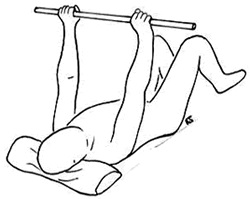
- Lying on your back. Grasp a stick in both your hands. Lift the stick up and gently take overhead until you feel a gentle stretch in your shoulder. Repeat 10 times.
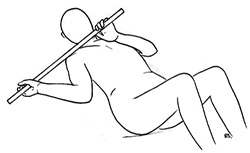
- Lying on your back, keeping the elbow to your side. Hold a stick in your hands. Move the stick sideways, gently pushing the hand on your operated arm outwards. Repeat 5 times
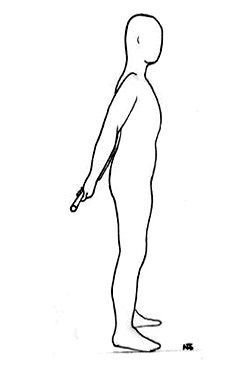
- Standing with your arms behind your back and grasp a stick between them. Gently lift the stick up away from your body. Repeat 5 times
Print PdfPatient leaflet for Stiff/Frozen shoulder - manipulation under anaesthesia & Arthroscopic release
